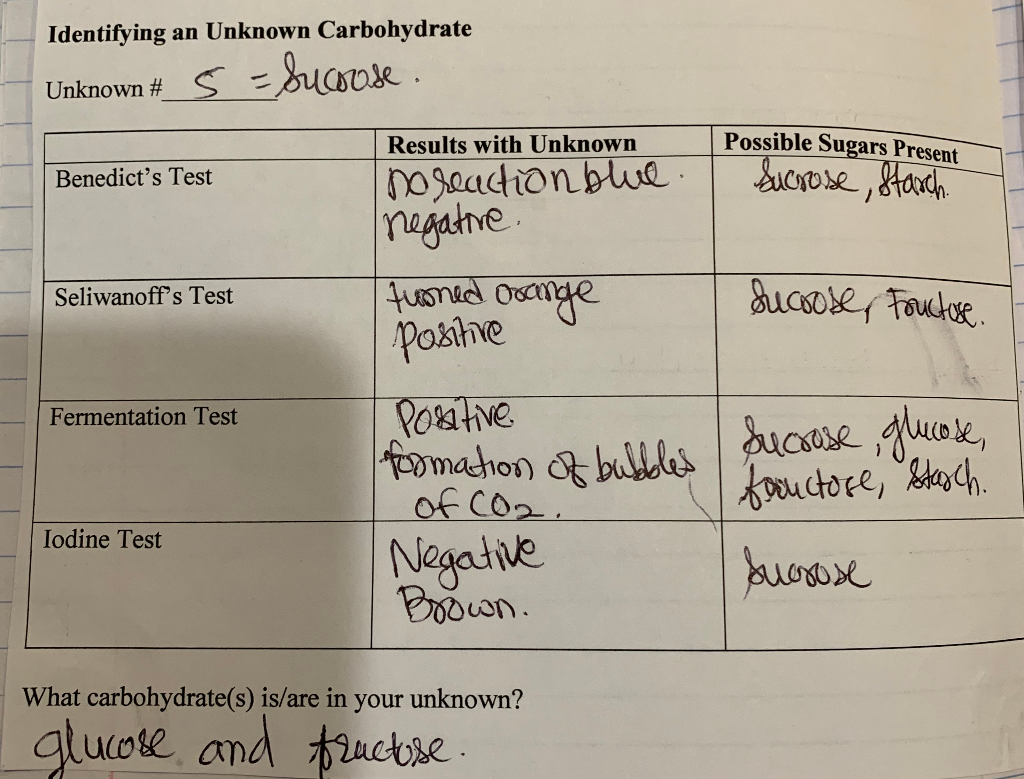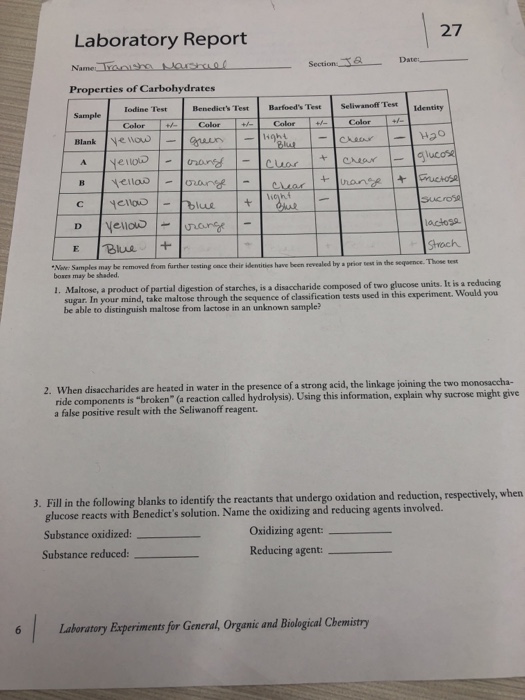Do you want to find 'identification of unknown carbohydrates lab report'? Here you can find questions and answers on the topic.
Table of contents
- Identification of unknown carbohydrates lab report in 2021
- Test for carbohydrates lab report conclusion
- Lab 12 carbohydrates
- Food test lab report conclusion
- Test for carbohydrates lab report pdf
- Enzymatic methods of carbohydrate analysis lab report
- Test for carbohydrates lab
- Barfoed's test lab report
Identification of unknown carbohydrates lab report in 2021
 This image illustrates identification of unknown carbohydrates lab report.
This image illustrates identification of unknown carbohydrates lab report.
Test for carbohydrates lab report conclusion
 This picture representes Test for carbohydrates lab report conclusion.
This picture representes Test for carbohydrates lab report conclusion.
Lab 12 carbohydrates
 This picture illustrates Lab 12 carbohydrates.
This picture illustrates Lab 12 carbohydrates.
Food test lab report conclusion
 This image representes Food test lab report conclusion.
This image representes Food test lab report conclusion.
Test for carbohydrates lab report pdf
 This picture illustrates Test for carbohydrates lab report pdf.
This picture illustrates Test for carbohydrates lab report pdf.
Enzymatic methods of carbohydrate analysis lab report
 This image demonstrates Enzymatic methods of carbohydrate analysis lab report.
This image demonstrates Enzymatic methods of carbohydrate analysis lab report.
Test for carbohydrates lab
 This image demonstrates Test for carbohydrates lab.
This image demonstrates Test for carbohydrates lab.
Barfoed's test lab report
 This image illustrates Barfoed's test lab report.
This image illustrates Barfoed's test lab report.
Are there any qualitative tests for carbohydrates?
Qualitative tests forQualitative tests for CarbohydratesCarbohydrates 06/15/14 Biochemistry For Medics- Lecture notes 1 Methods and significance 2.
How is Benedict's reagent used to identify unknown carbohydrates?
Benedict;s reagent consists of blue copper (II) ions which are condensed to copper (I).These ions will then be precipitated as red copper (I) oxide which is not soluble in water. In Benedict’s test, monosaccharides and disaccharides except for sucrose give a positive result.
What is the purpose of the carbohydrate lab report?
Identifying Carbohydrates Lab Report. The purpose of this lab is to learn how to identify different forms of carbohydrates by conducting the Benedict and Iodine test. The theory for this concept is that if in the benedicts test the carbohydrate reacts, it is a monosaccharide. If it reacts in the Iodine test it is a polysaccharide.
How to identify unknown carbohydrates in a lab?
Approximately 1.00 ml of the known carbohydrate samples and the two unknown samples were transferred on separate labelled test tubes. About 1.00 ml of Molisch reagent then 1.00 ml of concentrated H2SO4 was added to each sample. The test was observed for any change and was recorded.
Last Update: Oct 2021